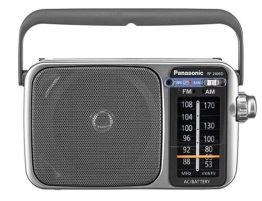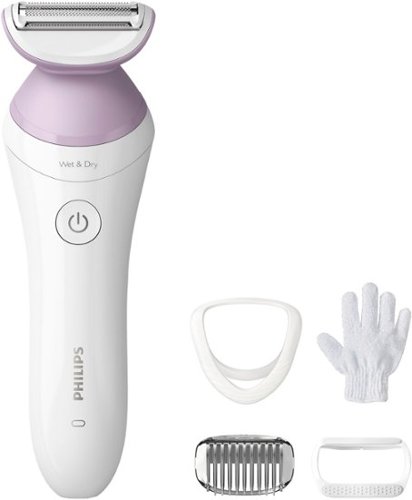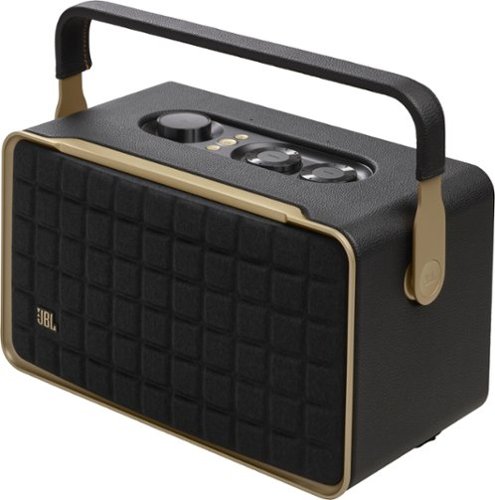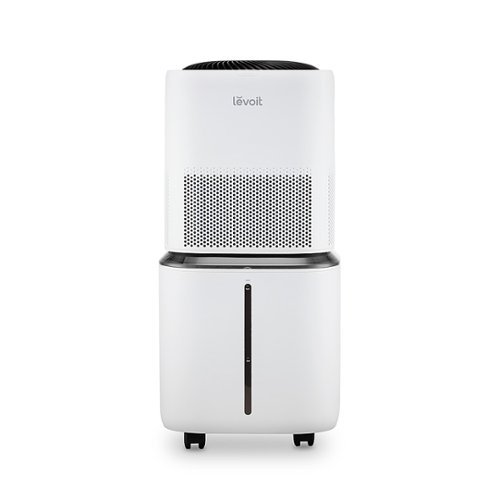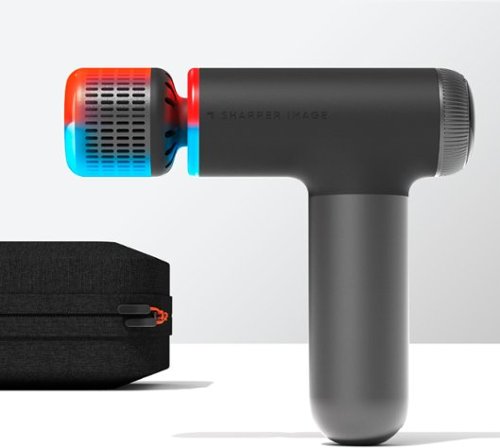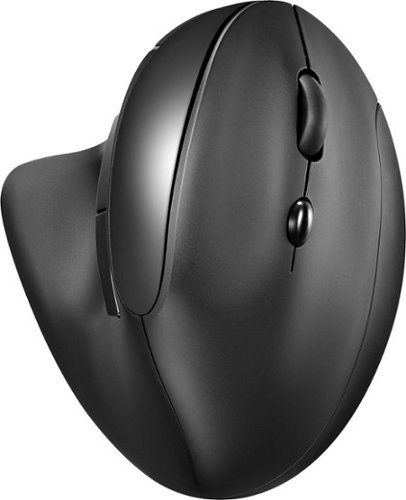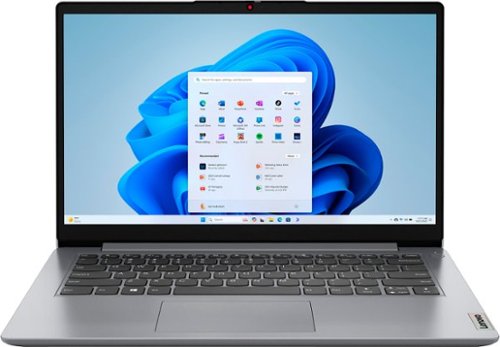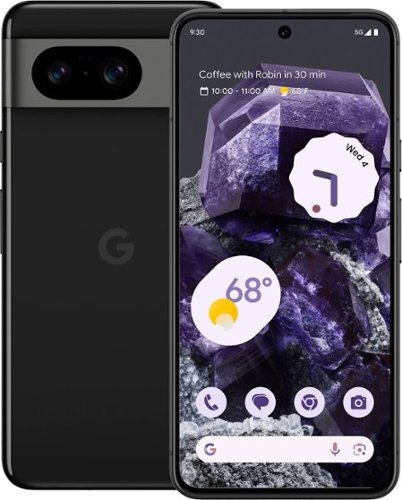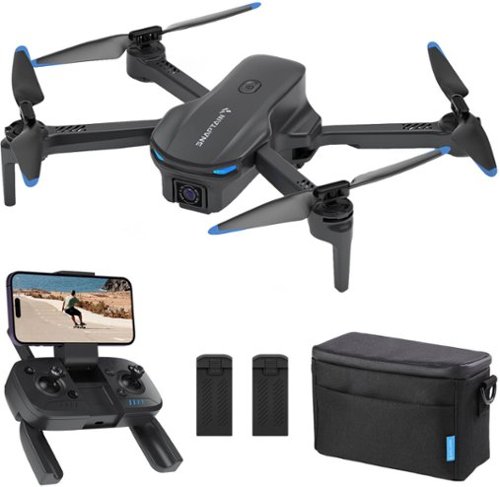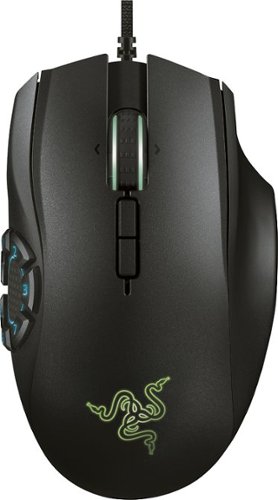Jaron's stats
- Review count149
- Helpfulness votes293
- First reviewSeptember 30, 2010
- Last reviewApril 30, 2024
- Featured reviews0
- Average rating3.6
- Review comment count2
- Helpfulness votes1
- First review commentOctober 13, 2015
- Last review commentNovember 1, 2016
- Featured review comments0
Questions
- Question count0
- Helpfulness votes0
- First questionNone
- Last questionNone
- Featured questions0
- Answer count11
- Helpfulness votes2
- First answerDecember 16, 2010
- Last answerSeptember 7, 2018
- Featured answers0
- Best answers0
This simple, portable FM/AM radio has an easy-to-use design. Its clear digital tuner with fluorescent pointer is easy to see and ensures stable tuning. The 10cm speaker and ferrite antenna transmit sound, crisp and clear in AM or FM. Operating with either an AC adaptor or 4 AA batteries, this radio can be used in the home or outside, perfect for camping, or as a backup radio for severe weather.
Customer Rating

4
It's a radio portable, what do you want me to say?
on April 30, 2024
Posted by: Jaron
Not a lot of words needed to talk about this thing; it's a basic AM/FM radio. Unlike the boomboxes of my childhood, this is quite small and easily portable. Also unlike those boomboxes, you can't store the power cable in the empty battery compartment since it runs on four AAs and not six D cell batteries.
The carry handle has a notch in the middle, making it easier to hang on a small branch or a nail in the wall if you're using it as a shop radio. The tuning dial is large and quick to turn ( perhaps a bit too large, making it easy to bump ). The single 4" speaker means no stereo sound, but it does sound surprisingly good and can get fairly loud. And it's even got a 3.5mm jack for headphones.
It might be a tad overpriced for what it is ( $30 as of this writing, $20 - $25 would be a little better ) and the cord could stand to be a little longer ( it's only 5 ft ), but those are pretty nit-picky. It can be a great travel radio, something to bring to the beach where you don't care if it gets a little dirty or scratched. Same as a shop radio if you've got sawdust or grease all around and you don't want to ruin a touchscreen device. It might be a little big for an emergency kit radio, but it could also do the job.
I would recommend this to a friend!
The convenient and easy-to-use Philips Lady Shaver Series 6000 is designed to be gentle and comfortable on the skin in different body areas*. 80% of our consumers confirm no razor burns and redness**. Achieve hair-free skin without compromising on skin comfort. The floating foil glides naturally over your curves and contours, maintaining close contact with your skin for an even shave. For an even more gentle and comfortable shave, use during your shower or bath routine with anti-slip grip for optimal Wet & Dry use.
Customer Rating

3
Might save money in long run, but not time
on April 30, 2024
Posted by: Jaron
This trimmer/shaver uses the same head Philips has used on their men's trimmers for almost ten years. The difference is the wider grip, pink coloring, and the inclusion of some different plastic guards. Despite coming with only a charging cable and no wall wart ( it's USB and you can plug it in to any other USB charger ), the end that plugs into the trimmer uses the connector as many other and older Philips trimmers, so if you have an older Philips, you can share chargers.
The long and short of it it this trimmer doesn't give a particularly close shave, nor a quick one. The design of the trim head seems logical: the cross-cut blades on the top and bottom will cut down longer hairs and the mesh trimmer in the middle can handle the remaining stubble. The mesh trimming section simply can't cut hair as close as a razor can, and most people can accept that. But in order to get a passable shave, you have to make multiple passes ( often more than five ) over every area. Doesn't matter if it's legs, armpits, or more sensitive areas, you'll easily spend as much time shaving with this as you would with a razor and lather. And since this doesn't shave as close, you may end up needing to shave more often.
It's nice that it's a wet/dry trimmer, so you can use it in the tub or shower. And it might be more convenient for travel since you only pack the one trimmer instead of blades, shaving cream, and aftershave balms. As the cost of disposable razors and shaving cream will likely amount to more than $50 / year, this trimmer can likely save you time in the long run. But depending on how often you need to shave, and how close, it's hard to see this as more convenient in most cases.
No, I would not recommend this to a friend.
Fast speeds. Power efficiency. Temperature control. It’s everything you want in a storage device. It's compatible with the latest PCIe 4.0 x4 and PCIe 5.0 x2 interfaces, and boasts improved performance compared to 970 EVO Plus.
Customer Rating

3
Good enough general drive, but a little overpriced
on April 11, 2024
Posted by: Jaron
GOOD
- Decent all around performance
- Can operate in PCIe 4.0 and 5.0 mode
- Five-year warranty
- Decent all around performance
- Can operate in PCIe 4.0 and 5.0 mode
- Five-year warranty
BAD
- Below recommended PS5 performance
- PCIe 5.0 mode isn't
- No DRAM
- Smaller write cache
- Slightly more expensive than similar performing drives
- Below recommended PS5 performance
- PCIe 5.0 mode isn't
- No DRAM
- Smaller write cache
- Slightly more expensive than similar performing drives
TLDR
The 990 Evo is a decent drive for mainstream use. Though it lags behind the "high-performance" drives, 90% of computer users wouldn't notice the difference anyway. However, if you're looking for a "good enough" NVMe for your laptop or desktop, you can find quite a few drives of similar performance for $10 - $20 less than the 990 Evo.
The 990 Evo is a decent drive for mainstream use. Though it lags behind the "high-performance" drives, 90% of computer users wouldn't notice the difference anyway. However, if you're looking for a "good enough" NVMe for your laptop or desktop, you can find quite a few drives of similar performance for $10 - $20 less than the 990 Evo.
DETAILS
The 990 Evo is the replacement for the older 970 Evo, using new layered flash and updated controller. It's not a high-performance drive, nor an entry-level one, instead aiming for mainstream use. Thankfully the drive uses TLC flash rather than slower QLC flash. That it can operate in PCIe 4.0 and 5.0 isnot that big of deal. Yes, it can operate at faster PCIe 5.0 signalling, but two 5.0 lanes has roughly the same bandwidth as four 4.0 lanes. The 5.0 mode can lower drive latency a bit in some situations, but in sustained reads and writes, the performance difference is practically negligible.
The 990 Evo is the replacement for the older 970 Evo, using new layered flash and updated controller. It's not a high-performance drive, nor an entry-level one, instead aiming for mainstream use. Thankfully the drive uses TLC flash rather than slower QLC flash. That it can operate in PCIe 4.0 and 5.0 isnot that big of deal. Yes, it can operate at faster PCIe 5.0 signalling, but two 5.0 lanes has roughly the same bandwidth as four 4.0 lanes. The 5.0 mode can lower drive latency a bit in some situations, but in sustained reads and writes, the performance difference is practically negligible.
The box advertises read speeds up to 5000 MBps, but that comes with a big caveat. Unlike past Evo drives, the 990 Evo lacks DRAM to hold the storage map of what data is located where on the drive. This means the data map has to be stored on the drive itself, which is slower to access and causes more write wear on the drive itself.
The 990 Evo does support HMB, which moves the drive map to main system memory for faster access. If used with a HMB-capable computer, reaching the 5000 MBps read speed should happen. However, the PS5 doesn't support HMB, and the drive performance suffers accordingly, dropping down around 4800 MBps. You can still use the 990 Evo in a PS5, you'll just get warning messages that loading performance may suffer on some games.
The write cache is another place compromises were made on the 990 Evo to meet the lower price point, as it's quite a bit smaller than many other 2TB drives. This means it can't sustain big data writes for as long as other drives and drops down under 2000 MBps write speeds once the cache is saturated. However, while this is a real-world concern in some cases, unless you're regularly writing 100s of GBs of data to your drive, it's not a bottleneck to concern yourself with.
For a general purpose drive, there's nothing inherently wrong with the 990 Evo, except maybe the price. Performance is in line with others in the market segment. It also has a five-year warranty, which is longer than the three years of some other drives. But Samsung has a history of charging just a little bit more for their products than competing models. This often puts the 990 Evo $10 - $20 more than other similarly performing mainstream drives and only $10 - $20 less than higher performing drives from other companies. If you find it on sale, it'd be a great buy, but for someone worried about eking every ounce of value from their money, it's often not the most economical choice.
I would recommend this to a friend!
Retro style and superior sound that go great together—anywhere. Enjoy retro style, amazing audio, and built-in dual voice assistants anywhere in your home. With the JBL Authentics 300 speaker’s leatherlike enclosure, convenient metal handle, and built-in rechargeable battery, you can take your music with you—from the kitchen for your dinner-prep playlist to the bedroom for your wind-down podcast. Its retro ‘70s-inspired design featuring the iconic Quadrex grille makes a bold statement anywhere you set it down. And so do its wide soundstage, crystal-clear highs, and deep bass. With Google Assistant and Amazon Alexa available simultaneously, you can play your favorite music, control your smart home devices, and more, hands-free, using just your voice.
Customer Rating

4
Great for music streamers, not home media servers
on February 3, 2024
Posted by: Jaron
GOOD
Direct streaming for most music services
Both Android Assistant and Amazon Alexa
AirPlay compatible with iOS
Excellent sound quality
Has battery and handle for limited portable use
Direct streaming for most music services
Both Android Assistant and Amazon Alexa
AirPlay compatible with iOS
Excellent sound quality
Has battery and handle for limited portable use
BAD
Expensive
Lacks true subwoofer
Only 3-band EQ adjustment
No built-in DLNA/UPnP support for home media servers
Expensive
Lacks true subwoofer
Only 3-band EQ adjustment
No built-in DLNA/UPnP support for home media servers
TL/DR
This is a nice, albeit expensive, speaker for someone who primarily uses streaming services for their music enjoyment. Streaming directly to the speaker overcomes the limitations of Bluetooth bandwidth, and the speaker's solid construction and mix of drivers does a great job in replicating the audio. But it has limited compatibility with audio formats and home media servers, making it somewhat disappointing for home audio enthusiasts.
This is a nice, albeit expensive, speaker for someone who primarily uses streaming services for their music enjoyment. Streaming directly to the speaker overcomes the limitations of Bluetooth bandwidth, and the speaker's solid construction and mix of drivers does a great job in replicating the audio. But it has limited compatibility with audio formats and home media servers, making it somewhat disappointing for home audio enthusiasts.
IN DETAIL
The JBL Authentics 300, apart from having a ridiculous product name ( really, JBL, why not call it the Authentic and leave off the S? ), seems to be in some kind of limbo between premium Bluetooth speaker and mid-range home audio speaker. Its size and hardware features ( multiple drivers, 5.25" woofer, 100W output, Ethernet, and Wi-Fi ) give the impression of a networked home audio speaker that's meant to connect to your home server and play lossless music. But the software side and connectivity is strictly focused on Spotify, Tidal, and music streaming services, not the home server audiophile.
The JBL Authentics 300, apart from having a ridiculous product name ( really, JBL, why not call it the Authentic and leave off the S? ), seems to be in some kind of limbo between premium Bluetooth speaker and mid-range home audio speaker. Its size and hardware features ( multiple drivers, 5.25" woofer, 100W output, Ethernet, and Wi-Fi ) give the impression of a networked home audio speaker that's meant to connect to your home server and play lossless music. But the software side and connectivity is strictly focused on Spotify, Tidal, and music streaming services, not the home server audiophile.
Audio on the A300 is quite good with its twin tweeters and large woofer. Very crisp, very clean. It can also get quite loud without distorting. If you need something for the neighborhood BBQ or family reunion at the park, the JBL 300 has more than enough power to cover the open spaces, even running on battery. However, the radiator on the bottom is no replacement for a dedicated sub. With most rock, pop, and other current music, it's not a big deal. But in orchestral music or symphonic movie scores, the lack of impact on the low-end is very noticeable. A passive radiator simply can't give that physical punch an active sub can for things like timpani drums.
Audio profile tuning is limited at best. The speaker has treble and bass dials on the top and the companion phone/tablet app has a 3-band EQ and nothing else. Perhaps JBL thought a more customizable EQ was redundant since there's already an auto-tuning feature ( every time the speaker powers on, it's supposed to auto calibrate the audio for the room its in ). I think leaving the EQ at its default curve already sounds great, but I know others will be frustrated they can't tweak it to their liking.
The mobile app is also where you configure the speaker to directly link to services like Spotify, Tidal, Amazon Music, and others and you can set up Google Assistant for Chromecast and Amazon Alexa. You can also control speaker playback from multiple devices, not just the the one that started it. So if you used your phone to start playing music ( even if it's playing music from the phone over Bluetooth ), you can launch the JBL app on another device and go to the next track, change speaker volume, etc.
Unfortunately the speaker isn't designed to connect directly to home media servers or similar. There's nothing in the JBL app to connect to Plex, no support for DLNA, UPnP, iTunes servers, or anything like that. You can workaround this with Chromecast to a degree, but it leaves a lot to be desired. When playing music from my home Plex server through Chromecast on my desktop PC, the Opus files have occasional stuttering and the FLAC files won't play at all ( the manual doesn't specify which audio codecs or formats the speaker supports directly ). The A300 has limited AirPlay support in that you can AirPlay from iOS devices but not from desktop iTunes ( at least not the current Windows version ). I also had no playback problems at all when using AirPlay from an iPad Pro regardless of audio codec, whether FLAC and Opus from my Plex server or 24/96 ALAC music stored locally on the iPad. The iPad got quite warm during those tests, so it was probably transcoding the audio before sending it to the speaker.
Perhaps the oddest feature on the A300 is the integrated battery. While the smaller and easier to carry Authentics 200 doesn't have a battery, JBL put one in this larger model. Weird. JBL claims the battery lasts "up to 8 hours," though you shouldn't expect much more than 6 hours at normal listening volume. At best you could describe the A300 as semi-portable due to its size, weight, and the fact it isn't water or weatherproof. It's fine to bring in your back yard for some music on the patio, but it's certainly not something you want to take camping.
All told, at the current $450 MSRP, I'd call it a little too pricey for what you get. The problem isn't in the sound quality, as that's fantastic. But it's not markedly better than smart speakers from Bose and Sonos with very similar features around the $300 mark.
I would recommend this to a friend!
The Levoit Superior 6000S Smart Evaporative Humidifier is perfect for extra-large homes troubled by dry air. Evaporative technology quickly humidifies your space without wet mist that can damage furniture, while the included hose and built-in wick filters enable you to easily refill the tank with tap water from the sink. No matter where you are, adjust settings, create schedules, connect to voice assistants, and more with the VeSync app.
Customer Rating

3
An OK, but not great, humidifier
on February 1, 2024
Posted by: Jaron
GOOD
Large reservoir capacity
Controllable from mobile app
Quiet on low fan speed
Large reservoir capacity
Controllable from mobile app
Quiet on low fan speed
BAD
Limited customization options for humidifier operation
Mobile app requires creating account, even when controlling it locally
No carry handles on water tank
Power cord is a little short
Limited customization options for humidifier operation
Mobile app requires creating account, even when controlling it locally
No carry handles on water tank
Power cord is a little short
DETAILS
Evaporative coolers like the 6000S don't dump as much water into the air as quickly as ultrasonic humidifiers do, but they have the advantage of not making a mist cloud that can damage nearby furniture or carpet. However, with the size of the 6000S and how much air it can move over its pads, it can raise the humidity fairly quickly. The two big selling points are the 6 gallon tank and smart connectivity features, but both those features have significant flaws.
Evaporative coolers like the 6000S don't dump as much water into the air as quickly as ultrasonic humidifiers do, but they have the advantage of not making a mist cloud that can damage nearby furniture or carpet. However, with the size of the 6000S and how much air it can move over its pads, it can raise the humidity fairly quickly. The two big selling points are the 6 gallon tank and smart connectivity features, but both those features have significant flaws.
Levoit claims the thing is "easy to refill," but that all depends on your house layout, where you put the humidifier, and which faucet you use to refill it. Ideally, you roll the humidifier to your sink, set aside the top fan assembly, run the hose down into the tank through the filter assembly, fill it, then roll it back in place. However, if you have a lot of carpet, those four articulating wheels on the bottom don't work so well. The tank also lacks carry handles. As the tank alone weighs over 50 lbs when full, moving it up and down stairs is a major hassle. And if you need to remove the filter assembly, it's awkward to set it aside due to the exposed filters and wet hose hanging off the bottom. They may be small complaints, and they certainly don't apply to everyone's situation, but these small niggles add up to big frustration if you have to deal with them every few days.
In order to use the humidifier with the mobile application ( VeSync ), you must register an account with Levoit/VeSync, which is just another password to remember and another source of spam email. If you want to operate the humidifier remotely while away from your home, an account is fine, but it's completely ridiculous if you only want to manage things locally. There's a decided lack of options to customize how the humidifier runs.
Four modes are available, both on the mobile app and device control panel. Manual sets the fan to one of three static speeds. The app shows 10 speeds, but it's incorrect ( speeds 1-3, 4-6, and 7-9 are all the same ). In Humidity mode the fan will turn on and off automatically trying to maintain a set humidity %. Auto mode is similar, except it uses a preset table that changes humidity % target depending on the temperature. Sleep mode is the same as Manual on low, except it turns the control panel on the humidifier off so it doesn't light up a room at night. You can also set up schedules, such as turning the humidifier on in the morning, turning the display off at night, etc.
While the fan is very quiet on low, it's noticeable on medium and quite loud on high. The Humidity and Auto modes tend to use fairly aggressive fan speeds, keeping the fan on medium or high. Unfortunately there's no way to customize these operating modes, like limiting fan speed on Auto or setting a humidity target on Manual, etc. That's unacceptable to me for a humidifier that costs $250 ( as of this writing ).
The VeSync mobile app does allow more custom and complex operation, but it's not fast or easy to do. You create "Smart Scenes" which are programmatic if/then functions. If certain criteria are met ( a time of day, change in room humidity, etc ) then do certain actions ( turn off humidifier, change to other mode of operation, and more ). To its credit, VeSync is designed to link multiple smart home appliances and can make a very integrated system. However there's no instruction manual for it or online guides to explain exactly how the triggers work. Instead you have to search through the help forums visible in the app to find the answer to your questions. In doing so I found that there's no way to set Scene priority. If multiple Scenes can be triggered on at a given moment, it's random as to which will be triggered. This means you need to be very careful in how you set your Scene criteria, or risk having the humidifier constantly changing modes.
In the long term, there's also the question of maintenance costs for the S6000. New filter pads are $40 for a set. While the filters are washable, the manual recommends replacing them every few months. Thankfully the humidifier has a dry mode feature. If enabled, whenever the humidifier turns off, the water pump will stop while the fan continues to spin for 30 - 120 minutes. This dries out the filters when not in use, which prevents the growth of mold and helps them last longer.
I don't think the S6000 is a "bad" humidifier. It just doesn't seem up to the current retail cost. Individually, my complaints with it are fairly small, but added together it shows a lack of thought and finish on the product, like having only a 5-foot power cable. If you're not too specific on how you want it to run, or if moderate fan noise isn't an issue to you, it will probably suit your needs fine. For those that have more specific requirements, or that need more precise control over room humidity, you'll probably be disappointed given the asking price.
No, I would not recommend this to a friend.
Sharper Image Powerboost Pro+ Compact delivers an unrivaled deep tissue massage experience, effectively targeting sore muscles and tension for outstanding sports recovery. Seamlessly alternate between soothing heat (115°F) and invigorating cold (38°F) with the groundbreaking dual-temperature attachment, and easily manage intensity levels using the user-friendly dial and bright LED display. The whisper-quiet brushless motor guarantees tranquil massage sessions without disturbances, while the compact, long-lasting design provides on-the-go relief with a 2-hour runtime per charge. Customize your massage with 4 unique attachments - Round, Hot + Cold, Fork, and Flat - and conveniently store the device and accessories in the provided carrying case. Transform your sports recovery routine with the Powerboost® Pro+ Compact today!
Customer Rating

3
Nice features, horrible ergonomics
on January 3, 2024
Posted by: Jaron
So far as hand massage guns go, the PowerBoost is pretty nice. The battery lasts a good time and can be recharged from any normal power adapter. The zippered softshell case is good quality and keeps the massager and accessories neatly together. The hot and cold massage head, perhaps the main feature, can be very helpful with different kinds of muscle pains. However this only works with one of the massage heads, so if you want hot or cold with a different head shape, it can't do it.
The big downside is the near total lack of ergonomics. The PowerBoost has the same 90 degree handle so many other percussive massagers use, which is rather uncomfortable to use for more than a few minutes at a time. The heat is controlled by the dial at the rear, which is easy to use with a second hand, but would've been better if it was closer to the handle so you could operate it with your thumb. A button at the very end of the handle powers the device on and also changes the vibration intensity, which is completely awkward to use.
I would recommend this to a friend!
Whether you just got a new computer or are simply upgrading your current setup, you can’t go wrong with this Insignia NS-PM4EK6B24 Bluetooth 6-Button Ergonomic Mouse. It uses reliable Bluetooth technology to easily connect to your Windows, macOS, ChromeOS, iPadOS and Android systems. A sleek, ergonomic build is comfortable enough for everyday use, and 6 buttons provide plenty of simple, intuitive control options. Optical technology makes this mouse more than suitable for a variety of daily uses. Finally, a power switch and LED indicators help to preserve the battery life of your mouse. Upgrade your setup with this easy-to-use Insignia mouse.
Customer Rating

4
Decent mouse, not for large hands
on December 1, 2023
Posted by: Jaron
This is a quite basic mouse, so there's not a lot to say about it. Construction seems to be what you would expect for $40 ( as of this writing ). It doesn't seem flimsy or cheap, but it's not particularly solid or robust either. The feet let it slide around fine enough on a mouse pad, but it's not as smooth as other, nicer mice I've tried. The buttons aren't programmable or customizable. "Adequate" is the word that keeps coming to mind.
It does seem to be designed for average-to-small hands. My hands are much wider than average, but only a little longer; somewhere between L to XL. I prefer a full palm hold on my mouse rather than a fingertip or claw position. To get my fingertips in their usual position, the mouse mostly contacts the ridge under my knuckles rather than back in the palm. There's also a significant gap between the base of the mouse and the edge of my palm when resting on the desk because the mouse is not tall enough for the width of my hand.
The other point of contention with the mouse is the battery. It uses a single AA battery, and includes one in the box, so that's a nice thing. Not having a rechargeable battery at this price is a bit of a bummer. Some people may like it, as alkaline AA cells last longer than internal rechargeables. Some people don't want to worry about always have a fresh AA on hand. I've only had it a week, so I can't comment on how long the battery should last. And I have no idea if this has an auto-standby mode or if it simply stays on the whole time.
I would recommend this to a friend!
The IdeaPad 1 raises the bar on every affordable laptop with a super-efficient Intel Celeron N4020 processor in a thin and compact 17.9 mm chassis that makes multitasking a breeze while boosting energy efficiency with up-to-11 hours of battery life and rapid charge. Get more value with four-sided narrow bezels for maximum screen, Dolby Audio speakers and Flip to Start for instant boot up. Optimize your video call experience with a 720p camera that comes with a privacy shutter to keep out prying eyes and Smart Noise Cancelling to cut out background noise.
Customer Rating

2
Inexpensive, barely usable, not worth your time
on November 15, 2023
Posted by: Jaron
Normally I try to give a list of good and bad aspects when reviewing a product, but this particular IdeaPad has practically nothing to recommend it. About the only positive I can say is that it includes a 1-year Office 365 subscription. Some might say the low price is a benefit, but in this case you're paying $200 for something that's barely usable.
I don't mind low-budget, entry-level tech and electronics. I've used such things a lot in my life, and generally been happy with their performance relative to their cost. Not everyone has tons of money to spend on luxuries. A lot of people don't want or need to spend top dollar for their uses. I was hoping this could be a laptop my little children could use. Being in Windows S mode is a plus as it locks the system down more. I wanted something I wouldn't be upset if it got a little beat up, something just powerful enough they could watch some videos, use for homework, and play simple games like puzzles and sudoku. However this laptop can barely even do that.
Everything about this laptop is low cost, which in an of itself is not bad. The case and frame is plastic and fit/finish is mediocre. The display is a low resolution TN panel with awful viewing angles. The touchpad is thoroughly mediocre and not the most responsive when you click it. Internal storage is an eMMC drive, which is about the slowest form of SSD you can have, and only 64GB ( only 25GB is left free out of the box ). All of this is expected for the price and just fine. If all you want is a cheap laptop for basic work, you give up some creature comforts and luxuries. So par for the course.
However the choice of CPU and RAM for this model cripple the performance. The CPU is a dual-core model from 2019. As operating systems and applications have become more capable of using multiple CPU cores, a dual-core CPU is at a big disadvantage these days. Often, the system and background threads will keep one core saturated, leaving only only one left for the applications you actually want to run. Even with nothing running except the OS, CPU stays at 80% utilization or higher.
Of the 4GB installed RAM, 256 MB are reserved for the integrated graphics, leaving only 3.7GB for the system. Just booting to the Windows desktop uses 75% of the available RAM. This leaves less than 1GB RAM available for other applications. Anything that wants more than that hits the swap/page files, which are on the slow eMMC drive, and requires more CPU usage to move the data around. This means launching and switching between applications is often extremely slow.
It goes beyond "Oh, it's a little slower than my other laptop" to "Is this thing slow or frozen again?" Initial setup and updating when I first pulled it out of the box took a couple hours. It probably could have gone faster, but after staring at the "Updates in progress. Don't turn off your computer" screen for over 10 minutes without any evident progress, I simply left the computer to run, went and did something else, and came back to check on it every 30 minutes.
After getting past the OOBE portion, it would still take minutes to get from the login screen to the base desktop. After a few minutes of nothing responding except the mouse cursor moving, it of course again prompted me to reboot as there were more updates to do. I did the same here as the initial updates: told it to install updates and reboot, then checked on it every 30 minutes to see if it had made progress. All in all, it was about six hours of slow updates before it stopped prompting me to apply updates.
After the critical Windows updates were applied, the system was still slow and unresponsive. Clicking on the Start menu or right-clicking on something would take 30-60 seconds for anything to show up. Trying to open a web browser took over five minutes, because the first time you launch Edge it wants to open three tabs and the system doesn't have enough memory to do that. Launching Solitaire the first time also took over three minutes. At this point I wanted to write it off. Even after removing bloatware and doing basic updates and system tuning, the computer was still quite slow and unresponsive. Having a little bit of lag is one thing, but waiting 20 seconds between when you click and when you see a menu pop up is painfully slow.
I decided to give it one more try with some more aggressive action. I've now spent almost a week on and off trying to tweak this system to get it to where it's at least somewhat usable. I disabled almost all of the UI graphical tweaks and animations ( including setting the desktop background to a solid color instead of the ridiculous Red Bull wallpaper ). I uninstalled MS Office, Teams, and OneDrive, disabled the Edge and Xbox startup processes, and forced the Microsoft Store and Windows Update through multiple refreshes to make sure they're up to date and no more big update searches are happening in the background. After all this, I re-uninstalled the unnecessary apps that got re-installed with the updates.
This freed up more memory so now 1.5GB is available from a steady desktop state. CPU usage is also much lower, mostly bouncing between 15% and 80%, though it still gets pegged at 100% a lot of the time. Launching a web browser still takes over a minute and it still doesn't handle more than one tab very well. Even one tab is a strain on the system if it's something like YouTube, Reddit, or Facebook. Solitaire now launches in under a minute. Performance is now what I'd call bearable, but only barely, and only after I spent significant time and effort in it. I know the steps I took to get the system to a usable performance level are well beyond most people.
Again, I get the idea of low-budget computers, but Lenovo went too low here.
No, I would not recommend this to a friend.
Meet Pixel 8. The helpful phone engineered by Google, with an amazing camera, powerful security, and an all-day battery. [1] With Google AI, you can do more, even faster – like fix photos, screen calls, and get answers. [2] And Pixel 8 has personal safety features for added peace of mind. [3]
Customer Rating

4
Meet the new boss, same as the old boss
on October 20, 2023
Posted by: Jaron
GOOD
- Nice display with variable refresh rate
- Special AI features for camera
- No bloatware
- Great options for importing data from other phones
- Nice display with variable refresh rate
- Special AI features for camera
- No bloatware
- Great options for importing data from other phones
BAD
- Still no micro SD slot
- More expensive than last year
- Still no micro SD slot
- More expensive than last year
TLDR
The Pixel 8 is a little smaller than the Pixel 7, has a slightly better display and camera features, and costs $100 more.
DETAILS
The main benefit of the Pixel series of phones is what you don't get: bloatware and forced apps. Most other manufacturers tend to stuff some extra apps on the phone, many of which you can't remove. The Pixel thankfully doesn't do this. It also uses a normal Android UI and not some weird in-house overlay or change to the navigation.
In comparison to the Pixel 7, the Pixel 8 doesn't change a whole lot. The body is a little smaller at 6.2" instead of 6.3". That makes it 5mm shorter and 3mm less side-to-side. I like this change because I thought the Pixel 7 was always at the edge of being too big to use with one hand. The corners are also a little more rounded than they were on the 7, something I don't like as much. The display has the same 2400x1080 resolution, but it now supports a variable 60 - 120 Hz refresh rate instead of the fixed 90hz on the Pixel 7. Most people probably won't notice the difference, honestly, though hopefully being able to use a slower refresh rate will help the battery go longer.
A lot of people had complaints about the Pixel 7 battery life, but I wasn't one of them. I could easily get two, sometimes three days on a charge, and I can do the same with the 8. However, I don't use my phone every waking second of the day either, so perhaps my experience doesn't apply to a lot of people. Charging is still done over wired USB-C ( data connection, too ), and wireless charging is also still built-in.
Pixels also make it easy for people to transition from other phones. If you're coming from a previous Pixel device, the two will automatically recognize each other when you power the new Pixel on and will ask to start the data transfer. The Pixel also has the option to import data and settings from your old phone over a direct wired connection. In the box is a USB-A to C adapter. You connect your old phone to its data cable, use the A-to-C adapter on the other end of the cable, and plug that into the Pixel. This even works with iPhones. While this grabs your contacts, calendars, mail accounts, Wi-Fi settings, and other things, it still doesn't import all system configuration settings. Even importing from a Pixel 7, I still had to go through system settings to change my display text size or reconfigure some apps.
Google still refuses to put a micro SD slot on their phones. I guess they're still trying to force everyone to use their online storage so they have complete control over your data, same as Apple does.
Also a bummer is the phone selling for $100 more than the Pixel 7 released at last year ( and still sells for ). Being able to get a flagship phone like the 7 for $600 when so many others were $800 and up was a great deal. Being $700 now is still less expensive than some alternatives, but it's certainly a damper on the value.
For someone already on a Pixel 7, the 8 is a minimal upgrade and probably one you don't need, especially after only a year of use.
I would recommend this to a friend!
Introducing the Snaptain E20 2.7K QHD Camera Drone, a groundbreaking addition to the world of drones. Experience the future of aerial photography with its effortless and intelligent operation, featuring one-click take-off and one-click landing capabilities. With the E20, you'll unlock new horizons and capture stunning moments with its smooth FPV images. Elevate your drone flying experience with Snaptain's E20 – where simplicity meets innovation.
Customer Rating

2
Poor video, worse flight performance
on October 20, 2023
Posted by: Jaron
GOOD
- Inexpensive
- Can be controlled by phone/tablet alone
- Comes with carry bag and spare parts
- Inexpensive
- Can be controlled by phone/tablet alone
- Comes with carry bag and spare parts
BAD
- Nearly everything else
- Horrible flight stabilization
- Poor video quality and no image stabilization
- Has trouble flying in anything more than the slightest breeze
- RF connection prone to interference
- No GPS for locating
- Short battery life
- Poor construction
- Video locked at 25fps
- Nearly everything else
- Horrible flight stabilization
- Poor video quality and no image stabilization
- Has trouble flying in anything more than the slightest breeze
- RF connection prone to interference
- No GPS for locating
- Short battery life
- Poor construction
- Video locked at 25fps
TLDR
The E20 is little more than a toy quad-copter with a camera strapped on. For $125 this wouldn't be a bad novelty toy, but it's a horrible choice for someone who wants to see what aerial photography can really do.
DETAILS
I've been flying RC aircraft for over ten years, and I've used video drones for the last five. While a lot of people think cheap drones like this Snaptain E20 are great for beginners, they're a bad choice for a lot of people.
On the surface, the E20 looks to be good value. It comes with a carry case, an extra battery, and spare prop blades. In a DJI drone, that's the basis of the "Fly More Bundle" and usually costs a few hundred extra. The E20 can also be piloted without the controller, using only a phone or tablet.
Once you start to fly it, you see the E20 offers little more than cheap construction and poor performance. The camera may capture images at 5MP resolution, but the quality is quite poor. Images are blurry and pixelated and look worse than you could capture on a cell phone from 10 years ago. A good 720p sensor would serve much better than a poor 5MP one. Video is even worse. The camera is directly mounted to the aircraft body instead of on a stabilized gimbal. The E20 doesn't have any software digital image stabilization either. So the camera captures every wiggle of the drone. The blades are also constantly in the camera frame and you get artifact lines across the video, too. Video framerate is also a fixed 25fps instead of the more common 24fps and 30fps used in the US. The mobile app stretches the camera feed to fit your phone display ( at least the Android version, I didn't try iOS ). If your phone's display is not 16:9, things will appear skewed. The video zoom feature also only affects the feed to your phone. The video recorded to the SD card will not zoom.
Drone construction is also lackluster. It uses brushed motors, which are cheaper than brushless motors, but are also noisier, less efficient, less powerful, and have shorter lifespan. This shows in the E20's flight performance. It flies well enough for the first few minutes of a fully charged battery, but then gets sluggish and unresponsive around 50% battery. Below 50%, it takes full power just to maintain altitude, and will often plummet to the ground in a barely controlled descent. That can be very unsafe to yourself or others. The batteries are rated for a maximum 18 minute flight time, but usable flight time is closer to 10 minutes max.
The drone lacks GPS or any kind of external camera or sensor, which means it doesn't have any sort of positioning assistance, collision detection, or return to home. Flight stability is poor as a result and it will wobble and drift while simply hovering. Combined with the weak motors, even a weak breeze is enough to blow the E20 around. The kit comes with rotor guards to protect the props against collision, but these add weight and change the balance, making the flight characteristics even worse.
The controller is made to look like the ones in older Mavic drones, using similar fold out handles and antennas. However, these antennas are fake and added only for looks. The drone connects using regular Wi-Fi between it, your phone/tablet, and the handheld controller itself. The manual lists a maximum range of 150m, with an 80m flight ceiling, but anything past 150 feet gets questionable. As it uses the normal Wi-Fi bands, interference from regular home wireless networks is a big problem. Flying it around my yard was quite frustrating as it was often unresponsive to the controls and kept crashing for no apparent reason. Flying at a neighborhood park proved much better.
I understand video drones can be expensive to get into. Usually you're looking around $600 minimum for the entry-level stuff. So a $200 drone with case and extra batteries is quite attractive. But the cheap drones usually aren't beginner-friendly. They don't hold their position well, meaning you have to fight wind and minor air currents. They lack basic collision detection and obstacle avoidance, so you're more likely to crash into a tree or have very rough landings. Without GPS or some kind of positioning function, you have no way to find the drone if it gets lost or blown away by a sudden wind gust. For someone just learning to fly drones, these can be big hurdles to overcome. And if the thing can't capture decent quality video, you might be left wondering what the point of it all is.
If you want to dip your toes into drone photography, you'd be better served looking around the $300-$400 mark for used or refurb drones. A refurb Autel, DJI Spark, DJI Mini, or similar drone can be had for under $400 which will help you fly better and take much better video. Even if you get another drone down the road, that used Mini you originally bought will stay useful for a long time.
No, I would not recommend this to a friend.
Jaron's Review Comments
Microsoft Sculpt Ergonomic L6V-00001 Wireless Mouse: This ergonomic mouse is designed to fit the natural shape of your hand with a raised height and scooped thumb design. Blue Track technology allows you to use your mouse on various surface types with accuracy.
Overall 1 out of 5
1 out of 5
 1 out of 5
1 out of 5This is NOT a BlueTooth Mouse
By JustAnotherGeekHere
It is very frustrating that Microsoft's design and marketing team has played a clever little trick in the design of the blue logo on this unit that invites one to infer that this product uses Bluetooth wireless technology when, in fact, it does not. Sadly, the lack of this feature is a deal breaker for me. But I will say that the unit feels nice in the hand, and had it been Bluetooth I would most likely have kept it and given it a much higher rating.
Jaron
Utah
October 13, 2015
MS has used a light blue color in their logos since the company was founded. The term "Bluetooth" isn't mentioned anywhere in the product name or description. I've never inferred a product was Bluetooth enabled simply because of the colors on it Insinuating that MS intentionally tried to deceive people into thinking this is a Bluetooth mouse because of the blue Windows button is asinine.
+1point
1of 1voted this comment as helpful.
Razer Naga Hex V2Upgrade your gaming system with this Razer Naga Hex gaming mouse. With a tilt-click scroll wheel and a seven-button mechanical thumb wheel for a total of 14 programmable buttons, the design ensures you'll never misclick. Redesigned with comfort in mind, this Razer Naga Hex gaming mouse accommodates the most popular play styles.
Overall 3 out of 5
3 out of 5
 3 out of 5
3 out of 5Great mouse help back by sub-par software
By Tekonus
This mouse has a great construction. Feels solid, buttons don't feel soft and have a solid click to them. Enough buttons without being too many. Unfortunately Razer's Synapse 2.0 software is pretty disappointing. It has a ton of features, but it has 2 major sticking points for me that are inexcusable. #1 is that you have to create a Razer account and login just to use a mouse driver! This just defies all logic to me, no matter how they try to spin it. #2 even after you login to their driver, I could find no way through the driver to map any buttons to "forward and back" without clunky workaround that make no sense. Many people like to use mouse buttons to go back and forward through webpages and other things on their computer. Every logitech mouse I've ever bought has had no problem with this. Why is this an issue? You can make settings for scrolling up and down but not generic windows keys for back and forward? Cheap generic mice do this!
This is a great mouse held back by sub-par software.
This is a great mouse held back by sub-par software.
Jaron
Utah
Re: Synapse
November 1, 2016
Yes, you need to create a Razer account to use the Synapse software. However, after the initial login, you can simply enter offline mode which means it doesn't have to log in and you don't have to be online. The online portion lets you save your mouse and keyboard profiles so if you transfer to a new computer, they will all transfer with you.
Yes, you can map Back and Forward function to the mouse. Synapse calls them Mouse Button 4 and 5, respectively. I don't find anything "clunky" about it on my Naga. Click on Mouse, click on "Side View" from the picture, click the button I want to program, choose Mouse Function > Mouse Button 4. It wasn't too hard.
0points
0of 0voted this comment as helpful.
Jaron's Questions
Jaron has not submitted any questions.
can i connect this home theater system via optical out on my LG 32LE5400?
just wanted to know if i can connect it to my tv
Short answer, no. While you can rig up a cable from the headphone out jack on the TV to two of the satellite speakers, the signal won't be strong enough from the TV to hear the speakers above a whisper.
These speakers need to be powered by an amplifier or receiver to work well.
These speakers need to be powered by an amplifier or receiver to work well.
13 years, 4 months ago
by
Jaron

